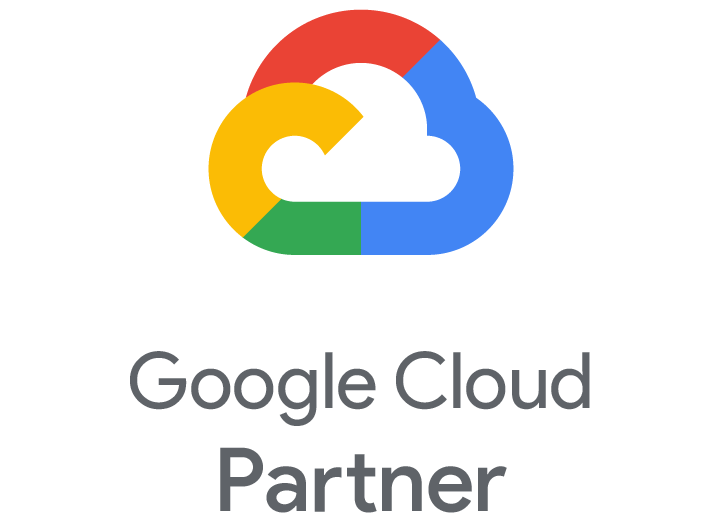** Note, we have used the word “Client” within the entire document to depict the scenario of the business being a Client of the marketing department. This could also mean another marketing agency dealing with an external client.
Before we get into why a strategy plan is important, let’s define what exactly a strategy plan is:
“A strategy plan provides a documented path to achieve your goals and also helps to demonstrate long-term strategic direction.”
A strategy plan should always be linked to your goals. Have you defined what your goals are?
Consider this, Think about running a marathon – you can’t just wake up one day and go run over 40 miles.
Instead, you set up a training plan and work up to running that distance.
It’s the same with the strategy plan you create for getting your marketing to work for you. You’ll put together a detailed and informed plan. The thing to remember that it is not a one and done kind of plan, It is a living, breathing document. Down the road, if you see something in your plan that isn’t working, you can always adjust.
The longer you work on figuring out the strategy, the better you’ll understand your target marketing targets, personas and offerings that you’ll need to create to entice buyers.

As you learn more, you might find ways to improve your strategy. Don’t be afraid to make these tweaks. This will ensure that you’re always thinking strategically. For this reason, key documents, such as the persona document, should also be agile documents that are constantly updated.
Why is this strategy plan so important? The strategy plan gives you the direction you need to achieve your goals and to plan the entire campaign.
It allows you to identify the tactics you need to achieve the end goal. The strategy plan also helps manage your workflow and internal expectations.
By having this plan, you can easily and effectively know what you’re doing and how you’re doing it at any given time.
Now that you understand what a strategy plan is and why it’s important, let’s learn a step-by-step process of creating one.
HOW DO YOU CREATE A STRATEGY PLAN?
Start any strategy plan by recapping your defined inbound goals. This plan revolves around ways to achieve these goals, so this step is critical. And you don’t want to create a plan according to outdated goals. Double check that the goals you’ve identified are the right ones to save yourself both additional work down the line.
The next step is to create your buyer personas. Remember that, a buyer persona is a semi-fictional representation of their ideal customer based on market research and real data about their existing customers.
Buyer personas are essential because they’re the foundation for the campaigns you create. But don’t worry, you won’t have to create these on your own! You create your buyer personas along with input from your client.
Here are the steps:
First, figure out how many buyer personas your client has, and decide to focus on the top two to three. Then, facilitate a buyer persona workshop with all the key stakeholders. Once you’ve got everyone together, having a list of questions will help you build out the personas.
To get the most out of this time, give out a questionnaire a few days before the buyer persona workshop. You can use the buyer persona template in the additional resources as a starting point. This way, they can dedicate extra time to answering these questions. It will also give you more time to collate all the information from the responses. Then all you’ll need to do is fill in the gaps during the workshop.
If you think your client needs a more interactive session, you could run a longer workshop. After the workshop, gather all the information into a document that clearly defines your client’s personas.
The third step is to validate the buyer persona assumptions made by the stakeholders. It’s natural that some assumptions were made during the workshop. Double-check this with research.
You could interview actual customers or even promote a survey aimed at a specific industry where your client’s personas fall into.
Just remember creating buyer personas is not a one-time thing. The persona document should be reviewed and updated constantly. During quarterly meetings with your client, you might find that you need to update the persona profiles based on the performance of your strategy.
CREATING THE STRATEGY PLAN
Personas can also change over time. Sometimes a challenge for a persona right now may not be considered a challenge in a few years’ time.
Once you’ve backed up your buyer personas with research, it’s time to identify each persona’s buyer journey.
The buyer’s journey is the active research process that people go through leading up to making a purchase. The buyer’s journey is made up of 3 stages – awareness, consideration, and decision.
Your job now is to determine what each of your identified personas need in each stage of the buyer’s journey.
Ask yourself questions such as:
How does this persona make decisions through the buyer’s journey?
What frustrations do they have with other suppliers?
What are their interests?
What are their pain points?
What do they want to read about?
You need to figure out how to provide the buyer personas with what they need at each stage.
Each persona will embark on a unique buyer’s journey, and you need to understand what that is.
Why? So you know which campaigns and content to create for each of the stages.
Ask your client to take a look through their email. A great place to find out what their buyer personas have been asking for is to look in their sent items. There, they’ll be able to find all the questions prospects and customers have asked over the past six months.
Have your client make a list of all of these top questions to help you uncover the common pain points their personas are looking to solve.
After you understand the personas and their buyer’s journey, the next step is to identify campaign themes and content.
The goal is to create campaign themes for each persona that provides solutions to their problems. List out campaign themes for each persona at each stage of the buyer’s journey — the awareness stage, the consideration stage, and the decision stage.
Once you’ve identified the campaign themes, you’re ready to move onto the next step:
Conducting keyword research.

Remember that your personas are using different search terms when looking for content at each stage of the buyer’s journey. At the awareness stage a person is searching their symptoms. At the consideration stage they’re looking at their options. And at the decision stage they’re weighing up their options in terms of cost.
You’ve done the groundwork on goals and personas, and now you want to be sure your client is found when their persona needs them. Start doing this by identifying strategic keywords for a specific campaign. Then, plan out content, such as blog posts, around these keywords to start ranking in search engine results.
You could even create a small Google AdWords campaign for a low amount of money. This will give you the keyword search numbers that your personas are looking for.
One of the main points of keyword research is to see which search terms are popular so that you can select the campaigns most likely to have a large impact. Take the time to do this. If you skip this step, you risk the chance of creating high-quality content on something that no one is searching for.
You’ve now gathered the items you need to create a 12-month strategic plan for your client, the last step in this process.
There’s four main things to highlight in your strategy plan: the goals, the identified campaigns, the timelines and the delivery, and the tactics you’ll use to promote the campaign.
Each of the previous six steps play a vital role in creating the 12-month strategic plan — this is just the point that you put them all into the same document.
Before you launch into the details on your plan, list out a recap of the client’s goals again to make sure that you’re on track.
Next, include the details of your campaigns. You can’t put all your campaigns into a strategy plan.
Select the ones which will have the greatest impact and fit within the client’s budget. These will be your key campaigns for the period.

In your strategy plan, outline these key campaigns, the proposed timelines, budgets and delivery plans. You’ll also need to explain how you’re going to report on everything, which you’ll do during the quarterly meetings. And lastly, identify the channels that you’ll be using to execute your strategy.
Here are some tips on setting up ongoing reporting :
- Have a weekly phone call with the project leaders from the client and agency on how the previous week went and what’s coming up in the next week.
- Do a monthly face-to-face meeting with the head of the department of the decision-maker who hired you.
- Next, hold a workshop every quarter or six months. Your agency should charge the client for this time. During the workshop, provide a review on buyer personas, keywords, performance of campaigns, and recommendations for the next phase.
- Now, explain how you plan to promote each campaign. This is where you’ll need to use tactics.
Keep in mind there are many different ways to promote a campaign – you can make use of a blog, native ads, paid advertising or email marketing to name a few. An important part of your campaign planning should also be centered on marketing automation, which will happen surrounding your campaign assets. Depending on where your campaign is in the buyer’s journey, the marketing automation journey you put this prospect in will differ.
Remember that your tactics will probably change quarterly and you can use as many of them as you need in order to achieve your goals. And there you have it – you now have a better understanding of each step of the strategy planning process.
Don’t forget, there’s seven steps to creating a strategy plan:
- Recap your defined goals
- Create your client’s buyer personas
- Validate these buyer persona assumptions
- Identify each persona’s buyer journey
- Identify campaigns and themes
- Conduct keyword research
- Create a 12-month strategic plan.
WHAT DOES A SUCCESSFUL STRATEGY PLAN LOOK LIKE?
Creating a strategy plan is essential to starting your client engagement off right. There are quite a few steps that you need to take, so we’ve created various templates to help you do this.
Let’s take a look how to use these templates to create a strategy plan for an example client, Fitness Planet.
The first document that will come in handy is the buyer persona document that we discussed earlier. Use this to ask Fitness Planet questions about their buyer personas. Remember that you want to get all the information possible to build out the persona profiles.
After doing some research, you discover that one of Fitness Planet’s personas is Health Conscious Heather. For this example lets assume that she is 24-years old and a junior editor at a women’s health magazine.
Her ambition is to be the senior editor at the company.
One of her challenges is finding time to go to gym. But because she’s health-conscious it’s really important that she does. She also feels that to work at her company she needs to look the part.
And she works with highly competitive, equally driven individuals. See how the persona is already getting built out?
Remember, you still need to validate the assumptions you’ve made when creating the buyer personas. So you set up some meetings with already existing Fitness Planet clients to see if the assumptions made were true.
Now that you’ve created the buyer personas and validated your assumptions, you need to identify the buyer journey that Health-Conscious Heather would embark on, and what content she would need at each stage.
Next, you move on to identifying campaigns themes and content that speaks to this persona. This will help you plot out and communicate how you’ll promote your campaign for Fitness Planet, and how the entire digital plan will come together.
One campaign theme you create is for the awareness stage. It’s focused on finding time for your health and fitness in your busy schedule. Now that you’ve identified the campaign theme, you will need to conduct keyword research. You’re looking specifically to see what keywords Fitness Planet should include in their content in order to reach Health-Conscious Heather at this stage of the buyer’s journey.
Once you have done this, you have not only defined a pathway in the awareness stage for Health-Conscious Heather, but for all people who can relate to this persona and have similar characteristics.
Now it’s time to put all this information together into a 12-month strategy plan. This is when you’ll use a digital plan to help format this. In this document you should include an overview of Fitness Planet’s product or services, their market, their goals and objectives, their personas and their strategy overview.
After putting together the plan, you’re ready to pitch it to Fitness Planet, so that they can review it and sign off on it.
You’ve now seen the strategy plan creation process in action. Now, take this knowledge and create a plan.
At Acumen Velocity, we help craft superior marketing plans that help our clients excel in highly challenging & competitive business environments. Let us know if you have any questions about the marketing plan process and we will be happy to help. We would love to speak with you.


